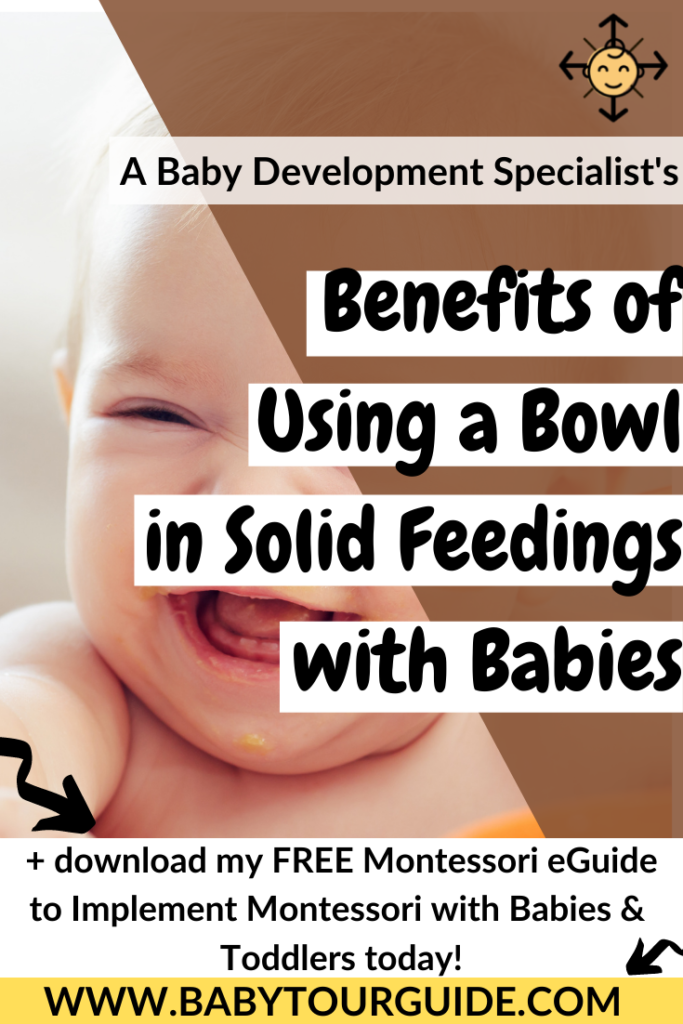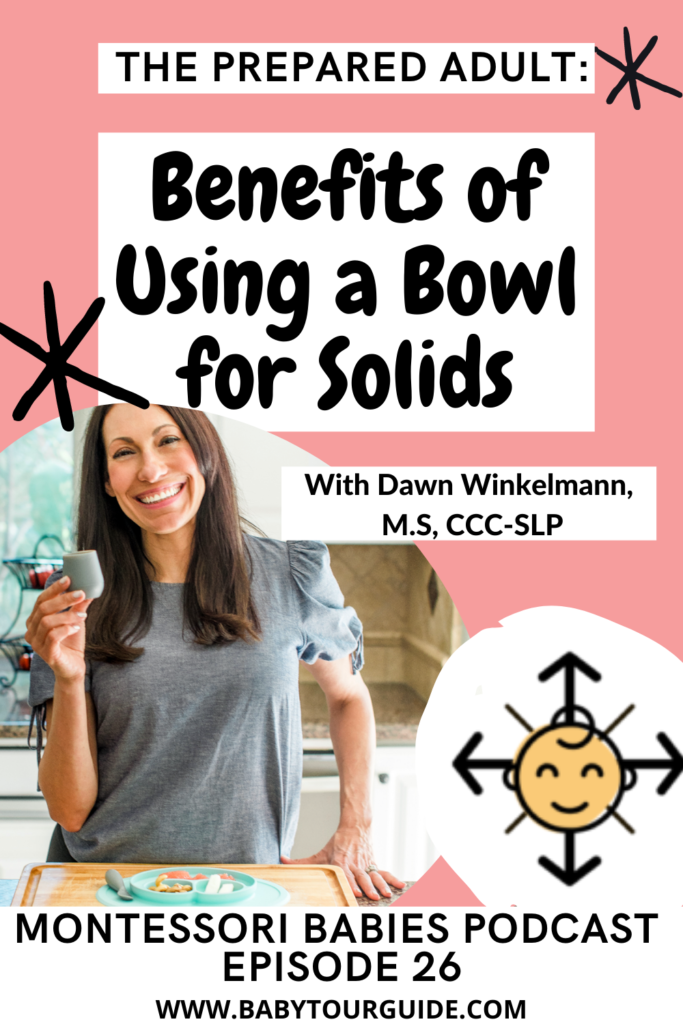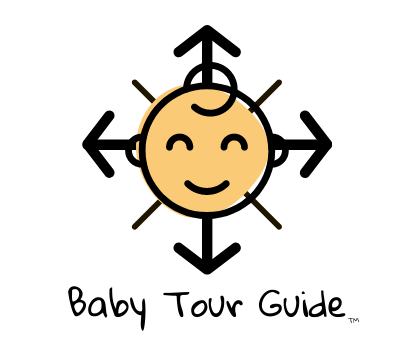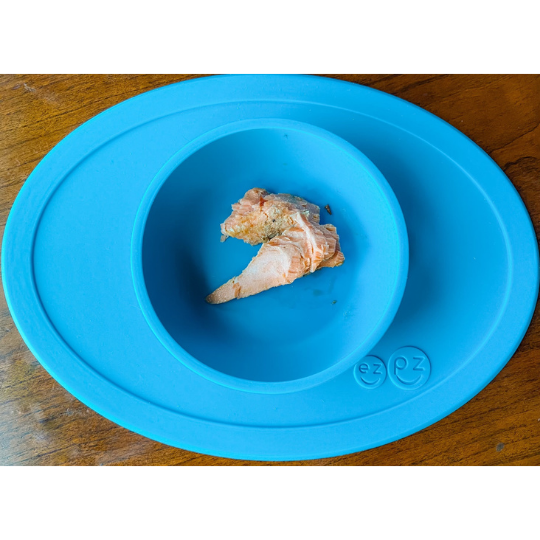In Episode 26 of our Montessori Babies Podcast, I had the honor of interviewing EZPZ’s amazing Pediatric Feeding Specialist and Speech and Language Pathologist, Dawn Winkelmann and she spoke all about the benefits of using a bowl with solid feedings!
“Every situation in which the child is able to do things by himself gives strength to the ego and changes the relationship with the environment.”
From Understanding the Human Being by Silvana Montanaro
Let’s go ahead and jump right into Dawn’s amazing interview on the Benefits of Using a Bowl for Solids!
Why should parents and educators and caregivers who are working with babies use a bowl?
Dawn says…
“What a bowl does is it allows a caregiver to have a place to put food. But also allows a baby to actually be able to interact with that food. Successfully being able to eat from a bowl really starts that whole developmental process of being able to reach and grab foods and bring things to their mouths.
So it’s really important for children to be set up for success with the starting solids. And part of that success is for us to provide an environment to help maybe maintain their interest in food and being able to successfully grab that food. And the best way to do that is offering food in a bowl.”

Can you talk about how to introduce the bowl, when to introduce the bowl, what that looks like in babies?
Dawn says…
“So the reason why we don’t want to hold the bowl is because of the fact that it doesn’t allow a baby to develop. So many milestones occur during feeding. And if we are holding the bowl, then they don’t work on reaching, they don’t work on their hand and mouth coordination. They don’t work on their depth perception, which is so important to be able to move past food and start really playing and learning how to play right.
So all of those skills need to happen in this feeding environment so that a child cognitively starts to move forward in all of their areas of the development. If a caregiver is holding a bowl and kind of offering food, then they’re generally spoon feeding a baby.
Developmentally a baby is supposed to bring a spoon to their mouth at six months of age. If they’re not, then we’re missing that spoon milestone. And if the caregiver is continuing to provide food via spoon, then they’re not maintaining their next feeding milestone, which is being able to grab food with their hand and bringing it to their mouth.
So now maybe baby seven months old and we’re missing two milestones. If we’re still continuing to feed baby that way by nine months now, baby’s not dipping. The spoon and baby is not working on their pincer grasp with food because they have no access to that bowl.
That’s when I start seeing babies is around the nine month mark and the parents are just like, “Oh, my baby’s not doing any of these things.” And I’m usually saying, “Are you controlling the bowl or is the bowl in front of baby?”
So a bowl is the object of choice to be able to have a child know where they’re going to focus, where that food is going to be, really work on all these cognitive skills of what that expectation is and to problem solve and really figure out a way to provide that sensory development. And we can’t really do that if the child does not have access to the bowl.”
So the bowl reduces food throwing by baby?
Dawn says
“Yes, that is so true. It’s like, that’s the only way baby knows how to communicate. So a lot of the food throwing that happens is because baby wants to do it and is not allowed to do it.
And so babies wants to grab a piece of that food. Because guess what? Baby’s brain and body are developmentally like, “Hey, you’re supposed to be doing this”. So the only way that they can share their frustration because they can’t speak yet is they’ll toss food, right?
And one of the best techniques to stop throwing food is to offer the baby the bowl. So like you’re saying, yes, have all that food there. But also what it does is it keeps babies attention at midline. You know, what happens is when a caregiver holds a bowl, then baby is going to lean to the right or lean to the left or lean back when when that spoon is coming towards them. And we don’t want baby to be moving around that much. We want them to maintain their positioning at midline. Number one, it’s all about safety.”
If you haven’t introduced the bowl yet and this is new information, can you introduce it at any point?
Dawn says…
“Yes, absolutely. So those of you who have been putting it on the tray, you can introduce the bowl at anytime. It’s never too late to introduce the bowl because what that bowl does is it starts to add a whole new dimension to meal time for baby to have more control and be more independence. And families who say “My baby’s stuck on purees and won’t eat any other foods that are in like stick forms”.
Well one of the first things they’ll say is, “Are you providing baby a bowl?” And when they say, no, I’m like, they can’t grab it. So, you know, if if, if pieces of food are on the highchair tray, it’s very difficult for for kids to grab. So what they end up doing is grabbing that food towards the end of the tray where there’s a lip and then they grab it. But guess what? They haven’t worked on those fine motor skills and it falls to the floor.
Well, it looks like babies throwing, but baby’s just trying to pick it up. So if we have it in the bowl and baby is able to just grab that right out of the bowl. They’re already successful in being able to have that piece of food in their grasp. And now they can easily bring that to their mouth and be a successful eater and then start to eat more.
Because parents will also say, “I make all these foods and, you know, my baby eats like a bite or two”. And I’ll say, “Are you serving it in a bowl?” They are more interested in that. They are more attuned to the slipperiness and the smell.
And now they’re really curious about that food because they are trying to grab it right and be successful with it. Whereas if it slips and slides on the tray, they’re less likely to continue to engage in that food because now we went from this environment that the food is located in like a couple of inches to a couple of feet on the high chair tray, kind of like out of sight, out of mind. Babies are just like, not really interested in that anymore.”
What are some types of foods that we can put into the bowl with our newly feeding babies?
Dawn says…
“Whether you are choosing to do a traditional method of feeding, so having purees that can be put into the bowl and then you preload the spoon and just kind of set that spoon on the edge of the bowl. All baby has to do to just grab the spoon and put it in the mouth because at six months, seven months, eight months, 10 months, 11 months, baby’s still not scooping on our own. So we will preload that spoon. But we’re going to set that spoon on the edge of that bowl so that baby grabs a spoon and puts into the mouth.

We’re not actually feeding baby that puree babies can feed themselves. So the first puree, you can offer a thin puree, you can offer a thicker puree, then you can offer a lumpy puree to give you an example of those thicknesses of a thin carrot puree, for example, or a thicker mashed potato or a lumpy puree like oatmeal or cottage cheese, right?
So that now you’ve got you’re still offering purees, but you’re offering three different textures of pure eggs. Three different ways for the baby to engage with that food, engage with that bowl, engage with that spoon and three different textures that are going on the tongue to practice those muscle movements to be able to have a good swallow.
If you’re going to do baby led weaning, you can put strips of food into the bowl. So it makes it really easy for them to grab that strip of banana and bring it up to the rim of the bowl and put it right into their mouth. So that makes it very fun and successful.
Or if you’re doing a combination approach where you’re doing a little bit of puree and a little bit of baby led weaning, you can still use the exact same bowl to be able to help facilitate that. And in our bowl, that EZPZ tiny bowl, it’s a bowl and placemat all in one so you can put food in the bowl, but you can also put food on the placemat.”
Check out EZPZ’s Tiny Bowl and use code Montessoribabies10 at checkout for 10% off your order!
What are some benefits that people don’t commonly know in regards to using the bowl?
Dawn says…
“I think the biggest one is is positioning and how a bowl helps with that. So we talked a little bit about midline and why that’s so important. So if the bowl is placed in front of the child, what makes that so important is that the child is going to lean forward and that head is going to have be slightly tucked down to look at the bowl just like you and I eat.
So everyone again envision that you are eating a meal and that there is a bowl of of something in front of you. And now look down at that bowl. Notice that the way that your your shoulders are positioned, your hands are positioned. The way your neck is slightly tilt. That positioning closes. The way to the airway, opens the way to the esophagus for a really successful swallow. That’s a position we want the child to be in for airway protection.
The other thing is that if that bowl is placed at midline, which means in the very middle part of baby, now a baby can take the right hand and go across that bowl. Baby can take their left hand and go across that bowl. Now we’re crossing midline. Right now we’re reaching or grabbing that spoon that moves over there. We’re leaning over for that cup. Now, baby is what we call an active feeder. Baby is engaged than that now. Baby’s going to start having more sensory awareness.
So having a bowl in front of a baby to allow them to really engage with that food on all different levels really sets a lifelong path of eating! That’s because they there’s no shame in and being able to get a little messy and have that food and crossing midline and and doing all those things.”
Let me know in the comments below how using a bowl has changed your baby’s feeding experience!
Xoxo,
Bianca, Your Baby Tour Guide



